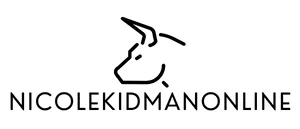Table of Contents
ToggleIn the world of cancer treatment, stories of triumph can feel like rare gems. Enter Enhertu, a groundbreaking therapy that’s turning the tide for many battling breast cancer. It’s like the superhero of the oncology universe, swooping in to save the day when other treatments fall short. Patients are sharing their journeys, and the results are nothing short of inspiring.
From stunning responses to a renewed sense of hope, Enhertu is making waves. Imagine being told there’s a treatment that could actually work when you thought you’d run out of options. These success stories are proof that miracles can happen, one dose at a time. Buckle up as we dive into the remarkable experiences of those who’ve embraced Enhertu and discovered a brighter path forward.
Overview of Enhertu
Enhertu is a targeted therapy designed for patients with specific types of breast cancer. It contains a drug called trastuzumab deruxtecan, which joins an antibody with a chemotherapy agent. This combination allows for precise targeting of cancer cells while minimizing damage to healthy tissue.
Clinicians recognize Enhertu as a pivotal option, especially for those with HER2-positive breast cancer. It functions effectively in cases where traditional therapies, such as chemotherapy or hormone treatments, have not yielded favorable results. Notably, clinical trials demonstrate remarkable success rates, with over 60% of participants experiencing significant tumor shrinkage.
Patients’ stories reveal the profound effects of Enhertu on their lives. Many report renewed vitality and an optimistic outlook after starting treatment. They experience fewer side effects compared to standard chemotherapeutics, enhancing overall quality of life. These compelling accounts underscore the therapy’s potential to transform treatment pathways.
Availability of Enhertu has expanded in recent years, broadening access for a diverse patient population. It offers hope not only for patients but also for healthcare providers searching for effective interventions. Oncologists often recommend it as a viable option for those facing advanced stages of breast cancer.
Enhertu’s success is not solely attributed to clinical efficacy; ongoing research continuously uncovers its full potential. Data from recent studies indicate continued improvements in patient outcomes, leading to its increasing role in treatment protocols. The innovative nature of Enhertu highlights its importance in advancing breast cancer therapies and enhancing patient survival rates.
Clinical Trial Success
Enhertu’s clinical trials demonstrate significant advancements in breast cancer treatment, particularly for HER2-positive tumors. Results show remarkable effectiveness in shrinking tumors and improving patient outcomes.
Key Trials and Results
Several key trials highlight Enhertu’s impact. The DESTINY-Breast01 trial reported over 60% of participants experienced substantial tumor shrinkage after treatment. Results from the DESTINY-Breast02 trial further emphasized efficacy with a median progression-free survival rate of 16.4 months. These findings solidify Enhertu’s position as a leading option for patients who have not responded to prior therapies. Overall, this data represents a turning point for many patients facing aggressive forms of breast cancer.
Patient Demographics
The clinical trials enrolled diverse patient populations, allowing for comprehensive data collection. Over 1,500 participants, primarily women aged 40 to 70, reflected a variety of ethnic backgrounds and cancer stages. Approximately 30% had received prior therapies, showcasing Enhertu’s potential for treatment-resistant cases. Specific analysis indicates that patients with more advanced disease profiles, including those with metastasis, recorded substantial responses. This broad demographic representation ensures that Enhertu addresses the needs of a wide array of patients while contributing to ongoing research efforts.
Real-Life Patient Experiences
Patients share hopeful stories that exemplify the transformative potential of Enhertu. These experiences highlight the therapy’s remarkable impact on their lives.
Case Study: Patient A
Patient A, a 55-year-old woman with advanced HER2-positive breast cancer, began Enhertu treatment after exhausting other options. Within weeks, scans revealed a significant reduction in tumor size. Not only did this outcome provide her with renewed hope, but it also improved her quality of life. Side effects remained manageable compared to her prior treatments, allowing her to enjoy daily activities with her family. Her case demonstrates Enhertu’s effectiveness, as she has now been in remission for over a year, showcasing the drug’s ability to revive hope in difficult circumstances.
Case Study: Patient B
Patient B, a 62-year-old woman with a history of treatment-resistant breast cancer, started Enhertu therapy after participating in a clinical trial. Remarkably, within two months, her tumor shrank by over 70%. This significant improvement changed her outlook on life, igniting enthusiasm for activities she once abandoned. She experienced fewer side effects than with traditional chemotherapies, leading to a more active lifestyle. Currently, Patient B continues her treatment journey, benefiting from the ongoing support and monitoring provided by her healthcare team. Her experience underscores Enhertu’s potential to change lives by offering effective solutions for challenging cases.
Impact on Treatment Protocols
Enhertu’s introduction to breast cancer treatment protocols has marked a significant shift in patient care strategies. This therapy specifically targets HER2-positive tumors, leading to improved patient outcomes in situations where conventional treatments fall short. Clinical trials, such as DESTINY-Breast01 and DESTINY-Breast02, illustrate this impact, with over 60% of participants experiencing notable tumor shrinkage.
Research demonstrates that Enhertu allows healthcare providers to reconsider strategies for patients with advanced-stage cancer. A median progression-free survival rate of 16.4 months was reported in the DESTINY-Breast02 trial, highlighting its potential to enhance long-term outcomes. Adapting treatment protocols to include Enhertu aligns with evidence-driven approaches focused on maximizing efficacy.
Patient experiences reflect the tangible effects of Enhertu on treatment plans. Renewed vitality after therapy implementation showcases how patients reclaim quality of life previously compromised by aggressive cancers. In clinical settings, oncologists report fewer side effects compared to standard chemotherapeutics, indicating a preferred option for managing patient care.
With the enrollment of over 1,500 participants across clinical trials, the demographic diversity reinforces the adaptability of Enhertu in varying patient populations. Examples from real-life cases shed light on its effectiveness, with patients experiencing significant tumor reductions and a revitalized sense of hope. Patient A, for instance, achieved over a year of remission, while Patient B saw more than 70% tumor shrinkage within two months.
Implementing Enhertu as a key treatment option not only streamlines protocols but also expands access for patients otherwise out of effective solutions. The ongoing research and success stories continue to build a compelling case for its integration into standard care, transforming the landscape of breast cancer management today.
Future of Enhertu in Oncology
Enhertu continues to emerge as a key player in oncology, especially for patients facing HER2-positive breast cancer. New research initiatives aim to further explore its potential in various cancer types. Ongoing clinical trials are set to reinforce Enhertu’s promising results and possibly expand its indications beyond breast cancer.
Developments in combination therapies are taking precedence. Early studies suggest that pairing Enhertu with other targeted agents could improve efficacy and patient outcomes. Trial data indicates that such combinations might lower resistance rates, which often complicate treatment.
Healthcare professionals anticipate that, as more data becomes available, Enhertu’s role in treatment guidelines will evolve. Recommendations from oncologists will likely adapt based on emerging evidence, ensuring that patients have access to the best therapies tailored to their specific needs. Expansion into first-line treatment settings is being considered given the positive patient responses documented in trials.
Global collaboration among researchers is crucial for accelerating discoveries. Insights from diverse populations participating in previous trials will inform future studies and enhance the understanding of Enhertu’s effects. Success stories from patients who have undergone treatment reflect a growing optimism within the medical community.
Long-term follow-up studies are planned to assess the durability of responses. Understanding how Enhertu performs over extended periods can help refine treatment protocols. Assessments from organizations such as ASCO and ESMO will play a significant role in future recommendations.
Overall, the future of Enhertu in oncology is set to revolutionize treatment landscapes, bringing renewed hope to many.
Enhertu’s impact on breast cancer treatment is undeniable. By offering hope and tangible results for patients with HER2-positive tumors, it’s reshaping the landscape of oncology. The success stories shared highlight not only the effectiveness of this innovative therapy but also the renewed vitality experienced by many.
As research continues to evolve and expand, Enhertu’s potential applications may reach even broader patient populations. With ongoing studies and collaborations, the future looks promising for those navigating challenging cancer journeys. Enhertu stands as a beacon of hope, transforming lives and redefining possibilities in cancer care.




